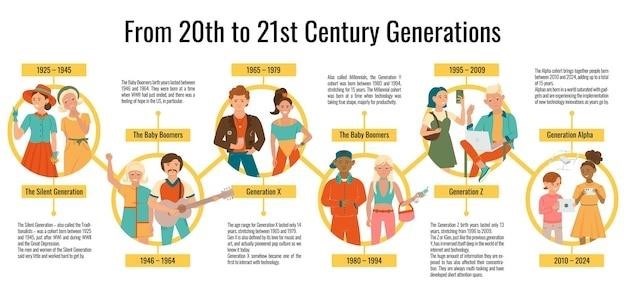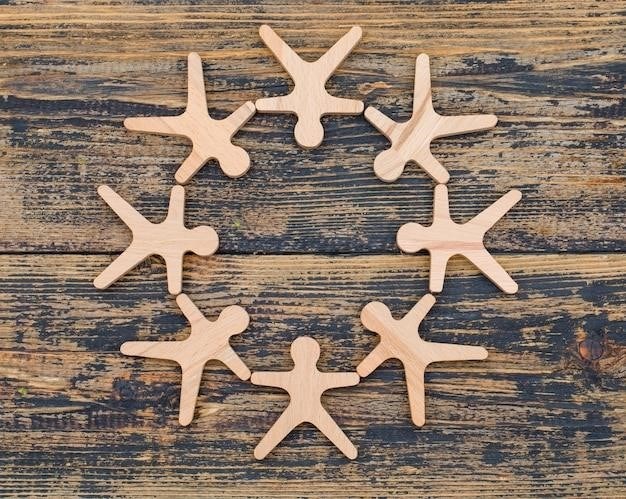Understanding Codependency
Codependency is a pattern of behavior that often develops in response to a relationship with someone who is addicted to drugs, alcohol, or another substance․ People with codependency often put the needs of others before their own, and they may have difficulty setting healthy boundaries; Codependency can also be characterized by a fear of abandonment and a tendency to be overly responsible for others․
What is Codependency?
Codependency is a complex pattern of behavior that often develops in response to a relationship with someone who is addicted to drugs, alcohol, or another substance․ While often associated with addiction, codependency can also be characterized by a fear of abandonment and a tendency to be overly responsible for others․ This can manifest in various ways, such as putting the needs of others before your own, having difficulty setting healthy boundaries, and taking on the emotional burden of others․
The 12 Steps of Co-Dependents Anonymous (CoDA)
Co-Dependents Anonymous (CoDA) is a 12-step program based on the principles of Alcoholics Anonymous, designed specifically for individuals struggling with codependency․ The program emphasizes self-reflection, personal responsibility, and the development of healthy relationships․ CoDA’s 12 steps offer a structured framework for individuals to work through their codependent patterns and achieve lasting recovery․ Through regular meetings, sharing experiences, and working through the steps, participants gain a deeper understanding of their codependency, develop coping mechanisms, and learn to live a more fulfilling life․

The 12 Steps of CoDA
The 12 Steps of Co-Dependents Anonymous (CoDA) provide a roadmap for individuals to recover from codependency and develop healthy relationships with themselves and others․
Step 1⁚ Admitting Powerlessness
The first step in the CoDA program is acknowledging that we are powerless over others and that our lives have become unmanageable; This step is about recognizing that we cannot control the behavior of others, and that our attempts to do so often lead to frustration and resentment․ We must accept that we are not responsible for the choices and actions of others, and that we cannot force them to change․ This step is also about admitting that our attempts to control and fix others have not worked, and that we need to find a new way to live․ It is a crucial step in recognizing the need for a higher power to guide us in our recovery journey․
Step 2⁚ Believing in a Higher Power
The second step in the CoDA program is coming to believe that a power greater than ourselves can restore us to sanity․ This step is about surrendering to something beyond our own control and recognizing that we need help to overcome our codependency․ This higher power can be anything that we believe in – God, nature, a spiritual force, or even a strong sense of inner wisdom․ This step is about acknowledging our limitations and trusting in something bigger than ourselves to guide us․ It is about opening ourselves up to the possibility of a new way of life, one that is free from the patterns of codependency․
Step 3⁚ Turning Will and Life Over to God
This step is about letting go of our need to control everything and surrendering our will to a higher power․ It is about trusting that this power will guide us and help us to live a more fulfilling life․ This step is often challenging for codependents, who are used to taking care of everything and everyone else․ It requires us to let go of our fear of losing control and to embrace the possibility of a power greater than ourselves․ This step is about making a conscious decision to let go of our need to control and to trust in something bigger than ourselves․ It is about recognizing that we are not in control of everything, and that there is a power that can help us to find peace and happiness․
Step 4⁚ Making a Fearless Moral Inventory
This step involves taking a close look at our lives and identifying our flaws, mistakes, and harmful behaviors․ It requires honesty and courage to face our shortcomings without judgment or shame․ Codependents often have difficulty admitting their own mistakes, preferring to focus on the faults of others․ This step encourages us to be honest with ourselves and to recognize the ways in which our actions have contributed to our problems․ It is about taking responsibility for our choices and making amends for any harm we have caused․ We must be willing to look at our past and present behavior with an open mind and without fear of what we might find․ It is about recognizing our patterns of codependent behavior and identifying the ways in which we have allowed others to control us․ This step sets the stage for the next step, which is admitting our wrongs to God and others․

Moving Forward in Recovery
The 12 steps of CoDA offer a framework for moving forward in recovery, helping individuals break free from the cycle of codependency and build healthier relationships with themselves and others․
Step 5⁚ Admitting Wrongs to God and Others
This step involves taking a deep look at the ways in which our codependent behaviors have harmed ourselves and others․ It’s about acknowledging the ways we’ve enabled unhealthy behavior, neglected our own needs, and perhaps even acted in ways that were hurtful or disrespectful․ This step can be incredibly difficult, as it requires us to confront our own shortcomings and accept responsibility for our actions․ However, it’s a crucial step towards healing and building healthier relationships․ The act of admitting our wrongs to a Higher Power (as we understand it) and to those we’ve hurt can be deeply liberating, allowing us to release the burden of guilt and shame and begin to make amends․
Step 6⁚ Being Ready to Have God Remove Defects
This step involves a shift in mindset․ We move from simply admitting our flaws to actively seeking a higher power’s help in removing them․ It’s about recognizing that we can’t change ourselves alone, that we need a guiding force to help us break free from our codependent patterns․ This step isn’t about magically erasing our flaws; it’s about opening ourselves to the possibility of transformation․ It requires surrender, letting go of our need to control and trusting that a power greater than ourselves can guide us towards healing․ The willingness to let go of our self-sufficiency and embrace a power beyond ourselves is a critical step in our journey towards a codependent-free life․
Step 7⁚ Humbly Asking God to Remove Shortcomings
This step builds upon the previous one by taking action․ It involves actively praying or meditating for guidance, seeking to remove the flaws and shortcomings that hinder our growth․ It’s about being open to receiving divine intervention in our lives, trusting that a higher power can help us overcome our codependency․ It’s not about demanding change, but about humbly asking for help with a sincere heart․ The key here is humility; it’s about recognizing our limitations and surrendering to a power beyond ourselves․ This step is about taking a leap of faith, trusting that even when we don’t understand the path, a higher power is guiding us towards a more fulfilling life․
Living a Codependent-Free Life
This section focuses on taking action to repair past harm and maintain a healthy, fulfilling life free from the patterns of codependency․
Step 8⁚ Making a List of People Harmed and Willingness to Make Amends
This step involves a thorough examination of past actions and their impact on others․ Co-dependents often struggle with guilt and shame, making it difficult to acknowledge the harm they may have caused․ It’s crucial to approach this process with compassion and understanding, recognizing that everyone makes mistakes․ The focus is not on self-punishment but on taking responsibility for past actions and identifying individuals who have been negatively affected․ This step requires a willingness to make amends, not necessarily to fix every wrong but to demonstrate sincere remorse and a commitment to making things right․ This may involve apologies, expressions of regret, or acts of kindness aimed at restoring trust and repairing relationships․
Step 9⁚ Making Direct Amends to People Except Where it Would Harm
This step involves taking action to repair the damage caused by past actions, but with a clear understanding of boundaries and safety․ Not all amends need to be made directly, especially if doing so would cause further harm or jeopardize personal safety․ The goal is to find ways to make amends that are both meaningful and respectful of all involved․ This may involve reaching out to individuals directly, offering apologies, or taking steps to make amends in a way that aligns with the other person’s needs and preferences․ The focus is on demonstrating genuine remorse and a commitment to making things right, while also respecting the boundaries and well-being of all involved․
Step 10⁚ Continuing to Take Personal Inventory and Admitting Wrongs
This step emphasizes the ongoing nature of self-reflection and accountability․ It encourages individuals to maintain a regular practice of examining their thoughts, feelings, and actions, both in the present and in relation to past experiences․ The key is to identify patterns of behavior that may perpetuate codependent tendencies, such as people-pleasing, over-giving, or assuming responsibility for others’ actions․ By acknowledging these patterns and taking responsibility for their impact on relationships, individuals can continue to develop healthier and more balanced ways of interacting with themselves and others․ This step is about building a consistent practice of self-awareness and honesty, fostering ongoing growth and transformation within the recovery process․
Step 11⁚ Seeking to Improve Conscious Contact with God
This step invites individuals to explore a deeper connection with a higher power, a force that transcends their own limitations and provides a sense of guidance and support․ The concept of “God” is not necessarily tied to a specific religious belief, but rather to a source of strength and wisdom beyond oneself․ This step emphasizes the importance of cultivating a conscious awareness of this higher power, seeking its presence in everyday life, and allowing it to inform decisions and actions․ It’s about cultivating a sense of trust, surrender, and faith, recognizing that there’s a force greater than ourselves that can guide us towards healing and growth․
Step 12⁚ Carrying the Message to Other Codependents
This final step embodies the spirit of service and sharing the transformative power of recovery․ It encourages individuals to reach out to others struggling with codependency, sharing their experiences, insights, and the lessons learned through the 12 steps․ This step emphasizes the importance of offering support, guidance, and hope to those who are still caught in the cycle of codependency․ It’s about creating a sense of community and connection, providing a safe space for others to share their struggles and find strength in the shared journey of recovery․ The act of carrying the message helps to perpetuate the cycle of healing, allowing individuals to contribute to the well-being of others while reinforcing their own commitment to a codependent-free life․

Leave a Reply